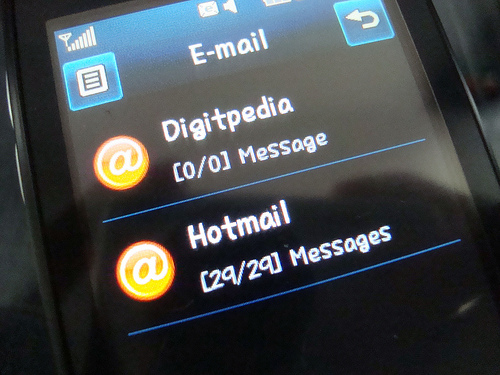Successful Email Marketing (CV301)
You can easily manage email marketing yourself, but if your business relies heavily on email marketing and your time is at a premium, you may want to seriously consider using an email service provider. ESPs are extremely convenient for many businesses because they take the industry’s best practices and automate them for you. They save you time by dealing with headaches businesses typically don’t have time to deal with such as managing new subscribers, handling email bounce-backs, removing unsubscribers, and tracking delivery results. If you’d prefer to manage your own email marketing campaign, then read on.

Image by: digitpedia
Connect with your prospects
The first step is to establish quality connections with prospects who would be most interested in your product or service. Place a signup form or guest book on your landing page for people to join your email list. If visitors find your Web content useful in helping them solve their problems, they will most certainly leave their contact information in hopes of learning more. These are the types of quality connections you want when building a reliable email list. When you give people the choice to send their contact information, you’re enacting permission-based marketing – the type of marketing that offers the best quality leads. On your signup form, clearly describe the nature of your email content and how frequently you plan to send it. In addition to name and email address, be sure to include a category where prospects can discuss their interest in your business. Knowing your prospects’ interests is extremely valuable. It enables you to direct specific email to those with a clear interest in your topic.
Create valuable email content
There’s only one reason why prospects would leave their contact information for you – they find your content so valuable, they want to learn more! When crafting email content, keep asking yourself, “Is my content informative?” If your emails are considered valuable enough, leads will forward them on to their colleagues or print them off for reference. Valuable content should be educational – it should give guidance and direction on how to solve common problems within your industry. It’s equally important that your content promotes your product or service and relates to your audience. Keep in mind that a key objective of email marketing is to build deeper relationships with your customers.
Determine your email format
Email format depends on your objective. Newsletters are used to communicate educational content and typically contain lots of text, few images, and soft calls to action. They are often written in a concise summary format with bulleted points, and are distributed weekly or monthly. Promotional content usually contains more images and less text. The distribution frequency is contingent upon your business and the stage of the sales cycle. Promotional content includes strong calls to action that entice prospects to click your ad images. Announcements are triggered around specific events such as press releases, holiday greetings, or thank you cards. Email distribution times should be tracked in a master schedule. Determine when your audience is most likely to read your email (day of week, time of day) and develop your email frequency around it.
Prevent your email from getting ignored
Lots of marketing email ends up in spam folders or trash cans. To counteract this, there are a few tricks you can use to maximize the chances of your email being read by its recipients. In the “From” line of your message, use a name that your recipients are most likely to recognize. In most cases, your brand name would be an ideal choice. Keep your “Subject” line short and concise (30-40 characters including spaces). The subject line should be a phrase that clearly promotes the immediate benefits of your email. Use words that are attention grabbers. For instance, if you’re emailing a newsletter, avoid generic subject titles like “monthly newsletter.” Use titles that draw instant attention like, “Turn Leads into Cash-Paying Customers.” Avoid using titles that may be misconstrued as spam.
Track your results
It’s a good idea to track your click-through rates (CTR) – the level of interaction received from links in your email. By imbedding HTML tracking code within your links, you can easily monitor which ones receive the most clicks. This is a great way to identify which links your audience finds most interesting. If you’re able to identify who likes certain topics of interest, you can target individual leads with information they would find most useful. CTR is also beneficial in weeding out which ads are underperforming and require optimization. Low CTRs can result from an unclear opt-in process, marketing to the wrong target audience, poorly written subject lines, confusing email design and layout, and lack of urgency created in calls to action.
Content Marketing & LinkedIn Strategist at Inbound Team
Inbound Team is Georgia's Digital Marketing Agency specializing in helping businesses grow through inbound and digital marketing.
Inbound Marketing Services are available for companies that want more leads and want to accelerate their growth.
